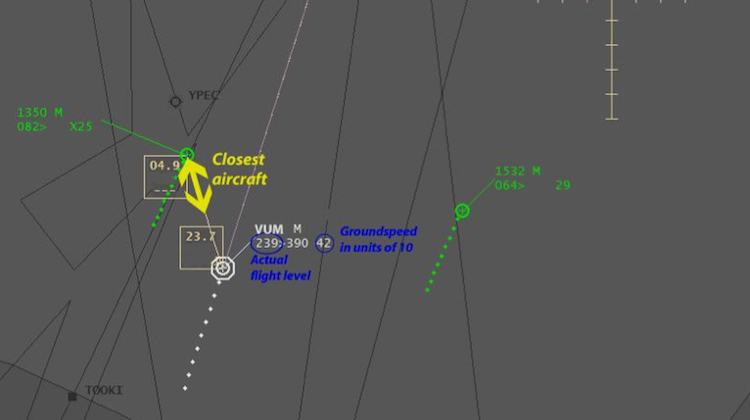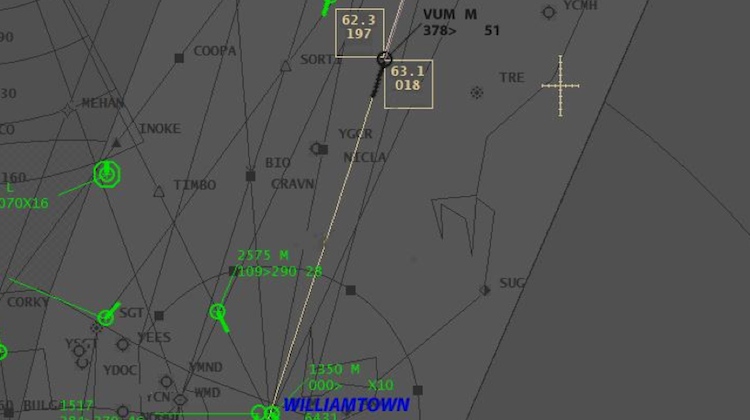
A Virgin Australia Boeing 737-800 flew untracked for 27 minutes on its way from Sydney to Brisbane after air traffic controllers mistakenly assumed the flight was headed to Newcastle’s Williamtown Airport.
The Australian Transport Safety Bureau (ATSB) report into the September 28 2012 incident found Airservices controllers let the aircraft, VH-VUM, fly about 225nm (416.7km) in controlled airspace without any assurance air traffic control would positively separate it from other aircraft in the vicinity.
Just after a handover between controllers had taken place, VH-VUM was “inhibited” on the air traffic control console, meaning it was shown as a black track with limited information provided on the accompanying on-screen label.
“Believing that VUM was destined for Newcastle Airport under Department of Defence air traffic control jurisdiction, the controller erroneously inhibited the flight data record (FDR) for VUM,” the ATSB report said.
“They did not check the aircraft’s callsign or other details prior to inhibiting the FDR.”
This meant that VH-VUM’s FDR registered as a “not concerned” aircraft track and its status remained unchanged as the aircraft passed over Williamtown, flew out of one air traffic control sector and into another.
Controllers were only alerted to VH-VUM’s presence when the flightdeck contacted them and asked if there was a frequency change required as they were nearing Brisbane.
“Due to this ‘not concerned’ status, the controller did not see or interrogate VUM’s FDR for the rest of the time it was under their jurisdiction,” the ATSB said.
“Similarly, the FDR did not attract the attention of two Inverell sector controllers after it entered and crossed their sector until they responded to a frequency change request from the flightcrew of VUM.”
The incident was a “loss of separation assurance”, the ATSB said, given controller separation plans would not consider VH-VUM from that point, and no surveillance control service was being provided to the flightcrew.
“Maintenance of the minimum aircraft separation standards during this period was not assured,” the ATSB said.

The ATSB said Airservices had changed its training program to include these types of “not concerned” or black track scenarios and to stress the importance of scanning “not concerned” flight tracks.
The scenarios would also be included in operational simulation training where appropriate.
“There was low awareness among the controllers of the potential impact of black ‘not concerned’ tracks in an en route airspace environment,” the ATSB said.
“Emphasis on that possibility through training can provide controllers with the ability to better deal with the situation should it arise again.”
Also, the ATSB noted implementation of the proposed joint civil and military air traffic management system – dubbed Onesky – would increase air traffic management interoperability between Airservices and the Department of Defence.










